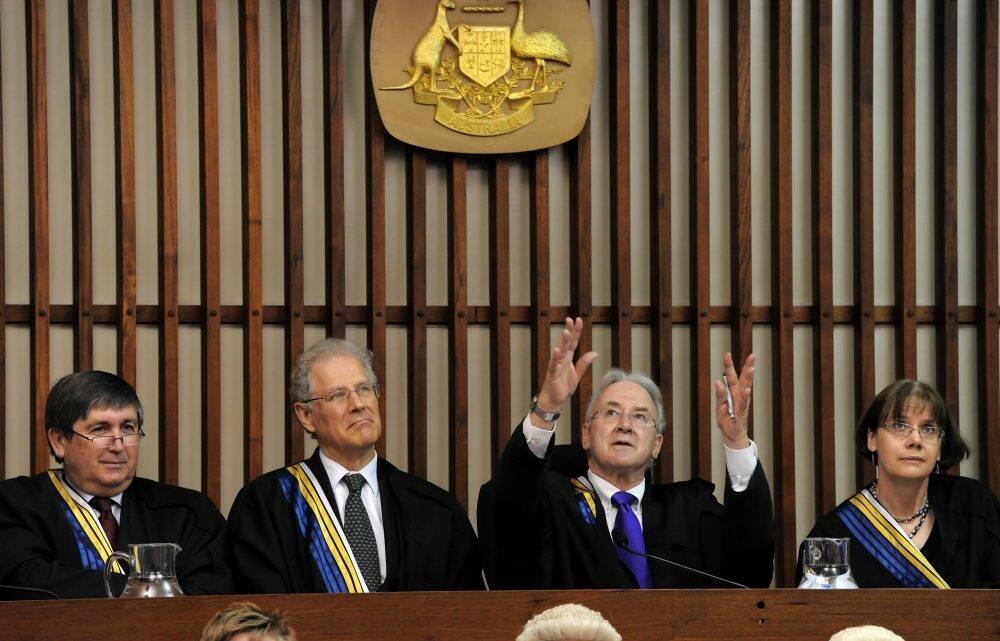In December 2012, I argued the so-called blitz in the ACT Supreme Court had not been the success that many people claimed, as it had absolutely no impact on the unacceptably high numbers of suspected offenders remanded in custody at the Alexander Maconochie Centre. Earlier that year, remandees had comprised more than 39 per cent of the total number of prisoners in the ACT, and I suggested we should be ashamed our remand numbers were the worst in Australia.
Subscribe now for unlimited access.
$0/
(min cost $0)
or signup to continue reading
More recently, two pieces of information relevant to the remand issue have come to notice. New Chief Justice Helen Murrell was reported as initiating a new “mini blitz”, now called a Pilot Central Criminal Listing, to occur over seven weeks in February to April this year. Also, I discovered from ACT Criminal Justice Profile for the March 2012 quarter that the proportion of ACT prisoners had dropped to 25.5 per cent. Could this fairly dramatic and welcome change mean that the new initiative had had a positive impact?

A close examination of the monthly averages of sentenced prisoners and remandees in the AMC over the period January 2012 to April 2014 unfortunately shows that this hypothesis is not supported by the evidence. In fact, during the first four months of this year, when the mini blitz was taking place, the number of remandees went up rather than down.
So how does one explain the fall in the proportion of prisoners who are remandees from more than 39 per cent to 25.5 per cent? The answer is: from the middle of 2013 the number of sentenced prisoners increased markedly to well above 200 (sometimes surging to more than 250), while the number of remandees remained fairly constant at just under 100 for most of the time. That meant the proportion of remandees went down.
Nevertheless, the mini blitz was generally seen as a success in reducing the backlog of both criminal and civil cases, even though, as reported in a news item on April 12, some prosecutors were described as “exhausted” and a number of logistical problems were encountered with the juggling of juries between courtrooms, jury rooms and even an abandoned court cafe. It has also been suggested some defence barristers were unable to represent their clients due to scheduling conflicts. That all sounds rather chaotic to me.
There must be some concern a court system that is seen by members of the public to be under pressure could result in a reduction in the respect for the judiciary, which is of vital importance. All courts, especially the Supreme Court, must conduct their business in an atmosphere of calm and confident authority in order to ensure that all parties are left in no doubt about who is in charge. The intensive listing of cases, or mini blitzes, is surely the antithesis of that.
President of the Bar Association Greg Stretton, SC, argued, as he had done previously, that the appointment of a fifth Supreme Court judge would be a more effective way to reduce the backlog in a more orderly and methodical way. He also argued that efficiency should always come second to the interest of justice. I agree with him totally.
The appointment of a fifth judge to the ACT Supreme Court is long overdue, but the ACT government has repeatedly said it would be too expensive. That argument is surely a no brainer. If an extra judge could reduce the number of remandees by as few as 10 per year, that would save more than the appointment would cost.
The problem is not that too many accused offenders are remanded in custody but that they are held there for disgracefully long periods, many for more than 12 months. The additional permanent judge must be specifically focused on reducing the time in custody of as many remandees as possible.
Our aim should be do everything possible to ensure the overwhelming majority of people remanded in custody should be held for a maximum of three months, with only exceptionally difficult or complex cases requiring more time. We should also aim to achieve a target of not more than 10 per cent of ACT prisoners in the unsentenced group. I recognise these two aims will be difficult to achieve in the immediate future; they are aspirations that should be sought by every progressive and compassionate justice system. There is no reason why the ACT should not be the first jurisdiction in Australia to get there.
Furthermore, the costs of the appointment of an extra judge are relatively trivial compared with the $54 million announced on April 29 for two new cell blocks at the AMC. These are scheduled for completion in mid-2015 (a 30-bed special-care facility) and mid-2016 (an 80-bed flexible-accommodation facility). These plans are admirable, but there is a distinct possibility, even a high probability, that the new beds will be needed well before then as the current numbers are very close to maximum capacity, and the flexibility needed to keep particular groups apart is already dangerously reduced.
Finally, it is worth noting that the Productivity Commission in its most recent report on government services has shown that in the year 2012-13, Queensland and the ACT were the two Australian jurisdictions with the lowest numbers of judicial officers (judges and magistrates) per 100,000 of the population. The appointment of an extra judge in the ACT is still not going to increase the ACT ratio to anywhere near the national average. This appointment is not a luxury; it is a necessity. It would also make it unnecessary for further mini blitzes planned for later this year to again disrupt the management of normal judicial proceedings.
David Biles is a semi-retired criminologist who lives in Canberra.

